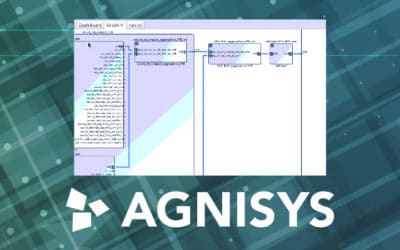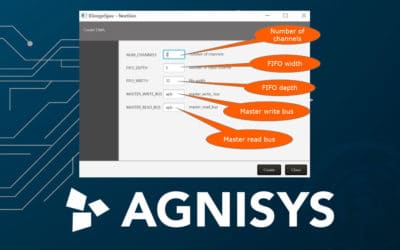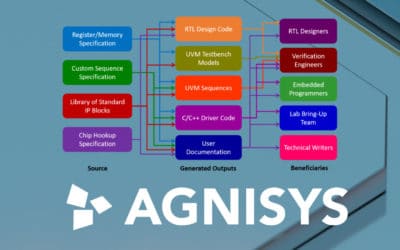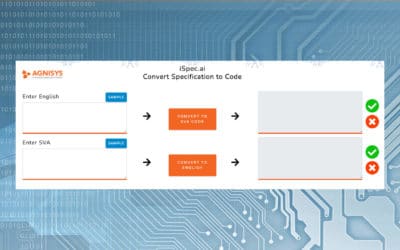It’s hard to think of any electronic design automation (EDA) innovation that’s had more impact than the Universal Verification Methodology (UVM). After decades of ad hoc designer-centric simulation and a few advanced verification teams using more automated methods, the UVM brought everyone involved in chip development into a new era. Verification engineers have ready access to object-oriented programming, constrained-random stimulus, self-checking tests, reusable models, functional coverage, assertions, and more. Both the UVM itself and the SystemVerilog language upon which it is built are industry standards, allowing teams to mix EDA tools from multiple vendors, and easily switch tools if they wish.
This post focuses on the UVM Register Abstraction Layer (RAL), sometimes called the UVM Register Layer. Today’s large system-on-chip (SoC) designs contain many control and status registers, often accessible from embedded software or drivers as well as hardware. Checking that these registers work correctly is an important early step in verification, and then the registers must be manipulated and tracked while running functional tests for the rest of the design. The UVM RAL provides a standardized set of base-class libraries and methods that make it easy to build an object-oriented model to access memory-mapped registers—and memories—in the design. The model includes register components that mirror the values of the registers in the design and hold the expected values of the registers to check test results.

- write()/read()
Execute a physical write/read on the register transfer level (RTL) design
After a write, the mirrored value is updated - poke()/peek()
Write/read directly to the RTL register, bypassing the physical interface
After a write, the mirrored value is updated - set()/get()
Write/read the desired value component directly, without accessing the design - update()
If the desired value is different from the mirrored value, invoke the write() method
Hence the mirrored value is updated - mirror()
Invoke the read() method to update the mirrored value to match the RTL design
May compare the design value with the mirrored value before updating
The UVM RAL provides many features to create models that reflect the complex register and memory structures in today’s SoCs. Each register may contain multiple fields, each of which may be read or written independently. Multiple registers may be grouped into register files, which may contain any number of registers or sub-files. Register blocks may contain any number of registers, register files, memories, or sub-blocks. For each element in a register model—field, register, register file, memory or block—there is a class instance that abstracts the read and write operations on that element. The UVM RAL supports both front-door register access, using the hardware physical interface, and back-door access directly to the RTL register. The UVM RAL also includes a register test sequence library with predefined test cases that can be used to verify the registers and memories.
With all this flexibility and power, writing the UVM RAL model is not a trivial task. The standard base classes, methods, and sequences provide a great foundation, but verification teams would like to automate the creation of RAL models as much as possible. Fortunately, it is easy to automatically generate these models and the RTL code at the same time, both from a common specification. TheIDesignSpec (IDS) solution from Agnisysprovides this capability, supporting numerous specification formats including the SystemRDL standard. For even more automation, verification engineers can use an Agnisys-supplied plug-in to Microsoft Word or Microsoft Excel to specify their registers in an intuitive graphical format. In the figure below, the user is specifying a register with 6 distinct, named bit fields. IDS takes this input and automatically generates the UVM RAL model shown to the right of the arrow.

Specifying a register file is equally straightforward, as shown in the following figure. The corresponding SystemRDL description is included. SystemRDL is one of the possible outputs from IDS, but it can also be an input for users who wish to write the description manually rather than use the plug-ins or the dedicated editor included in the Agnisys IDS-NG solution. The definitions for a register block containing multiple register files and for a memory are also illustrated.



IDS provides many options to reflect the diverse nature of SoC designs. Register, fields, and bits can be specified as read/write or read-only, with different values possible for hardware and software access. This is especially useful for configuration registers that are set by embedded software at boot time and then read but never changed by the hardware design. IDS supports more than 20 special register types, including shadow, lock, trigger-buffer, interrupt, counter, and external. The generated RTL designs and the UVM RAL models reflect these options accurately. IDS can optionally include functional coverage in the generated register models. This includes coverage for the bits read or written, the values in fields, the addresses read or written in an address map, or any combination of these. The user has full control over what type of coverage code is generated for any particular register or block.
The RAL is a good example of the sophisticated verification techniques enabled by the UVM. SoC development teams can define arbitrarily complex registers and memories, secure in the knowledge that they will be able to verify the designs containing these structures. Agnisys IDS elevates register and memory design and verification to the next level by providing easy specification and automatic generation of RTL code, UVM RAL models, C/C++ headers for embedded programmers, and multiple forms of documentation. This capability benefits every member of the SoC team, in particular verification engineers writing and running UVM-based tests.
Specification Automation for Designers
Requirements for various project teams and various tasks in the System-on-Chip (SoC) development process: hardware design, simulation, formal verification, firmware coding, system-level validation, and more.
A high quality standard for standards-based IP
The Standard Library of IP Generators (SLIP-G™) has proven to be very popular with users, and this is not surprising. Reuse plays a significant role in system-on-chip (SoC) development.
Automation of IP and SoC development
Agnisys has expanded its original focus on register automation to encompass specification-driven design, verification, embedded programming, validation, and documentation of IPs and SoCs This expansion is a testament to Agnisys growth and the many challenges semiconductor development teams face.
Automatically translate English description into SystemVerilog Assertions
Agnisys has developed a unique approach that uses artificial intelligence (AI) and machine learning (ML) to translate English descriptions of design intent into SystemVerilog Assertions (SVA).





Recent Comments